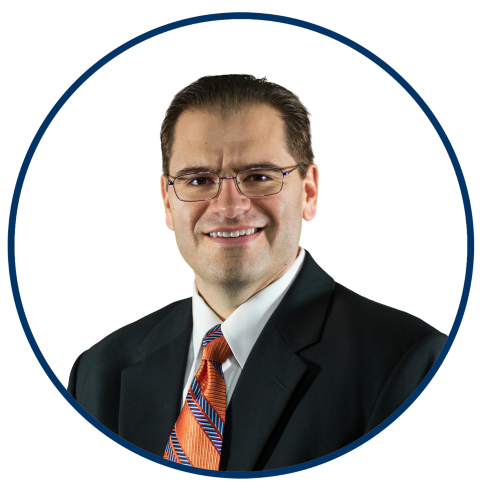Main steps in the secondary wastewater treatment process
During the wastewater treatment process, the primary and secondary stages aim to remove the majority of suspended solids and organic contaminants before the effluent progresses to tertiary treatment. The primary treatment removes nearly 60% of settleable solids and the secondary treatment uses bacterial decomposition to remove nearly 85% of organic matter from sewage. The tertiary stage removes any filterable solids from wastewater before the effluent is discharged into the environment.
Below, we discuss key steps in the secondary wastewater treatment process and why communities need an experienced team of wastewater engineers to improve its efficacy.
Key steps in the secondary wastewater treatment process
All publicly owned treatment works (POTWs) must comply with secondary treatment standards established by the U.S. Environmental Protection Agency (EPA). These standards set minimum, technology-based requirements for wastewater treatment plants that are reflected in metrics like total suspended solids removal, five-day biochemical oxygen demand and pH. These secondary treatment standards also provide special considerations for treatment plants receiving flows from industrial wastes, combined sewers and others.
Crucial steps in the secondary wastewater treatment process that POTWs must follow in adherence with EPA-established standards include:
- Effluent entering the aeration tank. Effluent leaves the sedimentation/settling tank in the primary stage and flows or is pumped into the aeration tank where it combines with mixed liquor suspended solids (MLSS). MLSS contains bacteria that use the organics – and in nitrifying facilities, ammonium – to sustain the bacterium's life cycle.
- Initiating activated sludge. MLSS remains in the aeration tank for several hours, mixing with air and bacteria. The bacteria consume organic matter and produce more bacteria. MLSS flows from the aeration tank into a sedimentation/settling tank where solids (Return Activated Sludge) are separated from the liquid (Secondary Effluent).
It is worth noting that biological nutrient removal (total nitrogen and total phosphorus limits) can be achieved during the activated sludge process through separate aerobic, anoxic and anaerobic chambers or alternating conditions in the same tank. The biological nutrient removal in activated sludge is cost-effective for municipalities with lower power consumption goals or restrictions and requires fewer chemicals.
- Recycling the Return Activated Sludge. The Return Activated Sludge is recycled back to the aeration tank to maintain the appropriate amount of bacteria in the aeration tank. The secondary effluent flows or is pumped to the tertiary stage for treatment. The Return Activated Sludge is occasionally discarded (Waste Activated Sludge) to maintain a healthy, appropriately aged inventory of bacteria in the aeration tank.
- Disinfecting treated effluent. The secondary treatment is complete once the effluent is disinfected with chlorine that kills pathogenic bacteria and reduces odor. It is estimated that chlorination kills more than 99% of harmful bacteria present in the effluent. Some POTWs use ozone or Ultraviolet light as alternatives to chlorine disinfection.
- Dechlorination. If chlorine is used for disinfection, the excess chlorine in treated sewage effluent can be harmful to fish and other aquatic life. In response to this environmental threat, several states have mandated removing excess chlorine in the effluent (dechlorination) before discharging to surface waters or further advanced treatment processes (tertiary treatment).
Advanced wastewater treatment techniques, alone or in combination, are increasingly implemented by POTWs to return more usable water to receiving lakes and streams. While the conventional activated sludge process is a proven system that is easy to control and operate, several POTWs use two alternative methods to improve secondary treatment performance. They are:
- Membrane bioreactor. A microfiltration or ultrafiltration membrane unit is combined with an aeration tank to further increase efficiency in removing contaminants. The longer Sludge Retention Time in a membrane bioreactor increases the potential for complete nitrification and improves the oxidation of recalcitrant toxic compounds. The technique yields high-quality effluent irrespective of fluctuations in the influent water quality.
- Integrated fixed-film activated sludge (IFAS). The IFAS process increases the secondary treatment capacity of POTWs. Such a system encourages biomass growth by adding fixed or free-floating media to an activated sludge basin. The more highly effective MLSS leads to higher aeration basin capacity and the improved sludge settling increases the capacity of secondary clarifiers.
Determining the most effective secondary treatment system for your local wastewater treatment plant involves various factors, including influent quality and volume, types of wastewater contaminants, and system operation and maintenance costs. A team of experienced wastewater engineers can help municipal leaders make the right decisions about an effective and affordable secondary wastewater treatment process.
Ensuring effective secondary treatment of wastewater
At Fehr Graham, we have helped communities across the Midwest evaluate, plan and design wastewater treatment solutions to protect the surrounding environment and maintain the quality of natural resources. Whether it is upgrading treatment systems, modeling collection systems, improving nutrient removal, complying with environmental standards or securing funding, our team of professional engineers will guide you to the best options for your community's POTW.
To learn more about how Fehr Graham can help improve the secondary wastewater treatment process at your local POTW, contact us or give us a call at 217.352.7688.
 |
Matthew Johnson is a Professional Engineer and Structural Engineer with comprehensive experience leading water and wastewater infrastructure projects. As one of the firm’s owners, he works with clients to find solutions that best meet their needs. Matthew’s a firm believer that one size (or solution) does not fit all, so he listens to clients to help them get the outcome that’s best for their situation. He has a knack for explaining complex situations in easy-to-understand ways so clients can make the best decisions. Contact him at |
Collaborative, Insightful, Results-Driven Solutions
Fehr Graham provides innovative engineering and environmental solutions to help improve the lives and communities of our customers.

